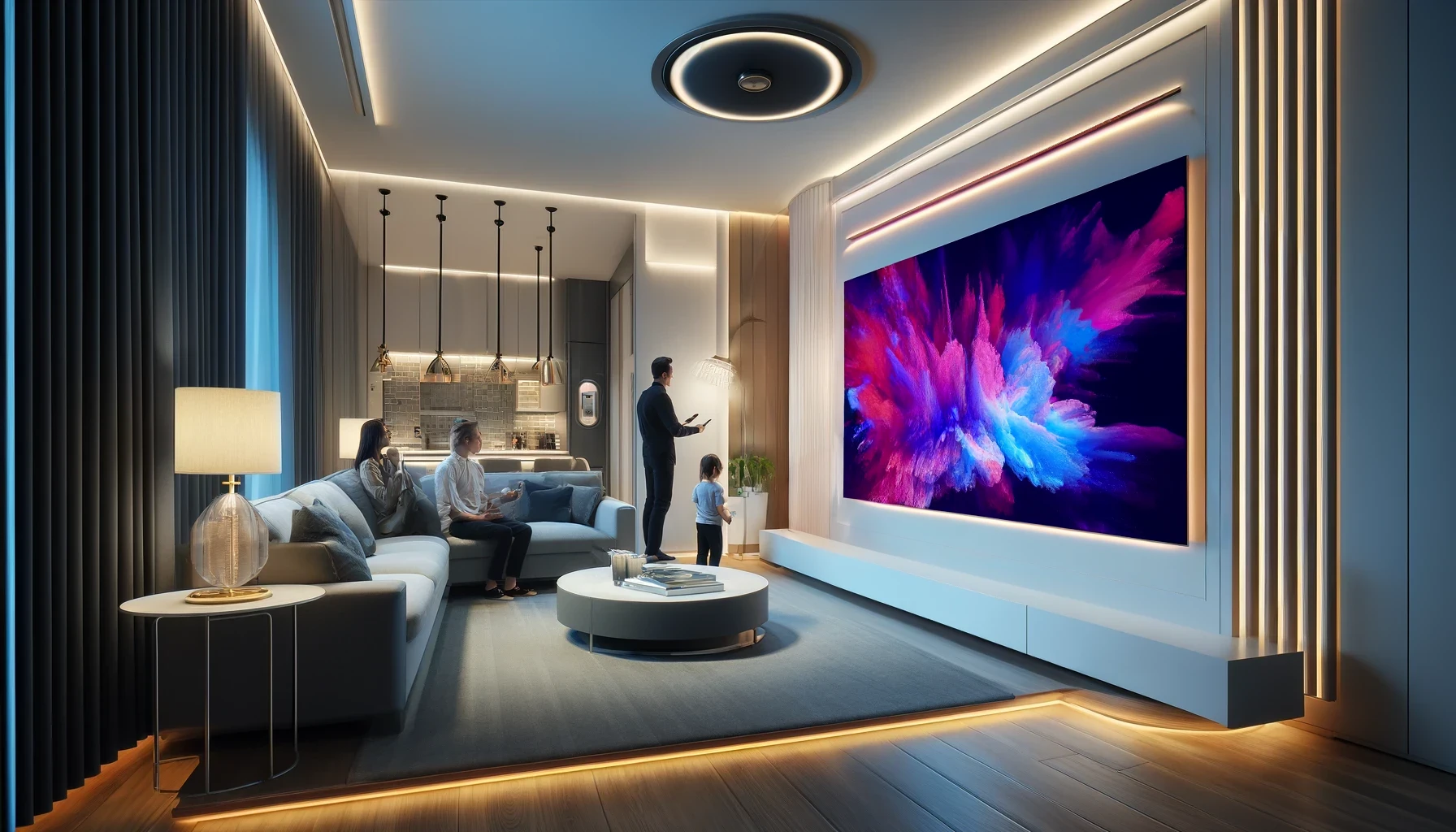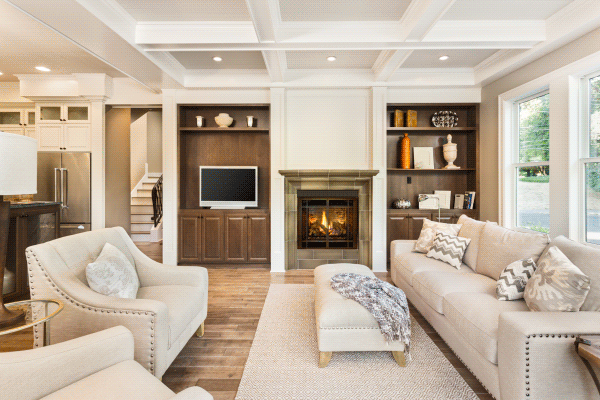
Transforming your residence into a smart home enhances convenience, security, and energy efficiency through automation. While the concept may seem futuristic, turning your home smart is straightforward when broken down into manageable steps. In this series, we will explore automating various aspects of your home, including lights, security systems, video monitoring, doors, and music. Each component adds a layer of sophistication and ease to your daily routines. Let’s begin with the first and one of the most impactful upgrades: automating your home lighting.
Automating the Lights
Lighting automation is a perfect starting point for smart home beginners. It offers both a significant convenience and an introduction to the broader capabilities of a smart home.
- Choose Your Ecosystem Start by selecting a smart home ecosystem that aligns with your existing devices and preferences. The primary platforms include Google Home, Amazon Alexa, and Apple HomeKit, there are other platforms to choose from as well, please do your due diligence before purchasing. Your choice should complement the technology you already use, ensuring seamless integration and control.
- Select Smart Bulbs or Smart Switches Decide whether to use smart bulbs or smart switches:

- Smart Bulbs: These replace your existing light bulbs and connect directly to your Wi-Fi, allowing control via an app or voice commands.
- Smart Switches: Ideal for controlling multiple lights simultaneously, smart switches replace your conventional switches and can offer more extensive automation features.
- Installation
- For Smart Bulbs: Installation is straightforward—simply replace your current bulbs and connect them to your network via their app.
- For Smart Switches: This option might require basic electrical knowledge, as you’ll replace existing switches. Always turn off power at the circuit breaker during installation. If unsure, consider hiring a professional.
- Set Up and Configuration Configure your new devices through the chosen platform’s app. Connect them to your Wi-Fi, name each light or group of lights, and organize them by rooms or zones within your app for easy management.
- Explore Automation Features Utilize the features of your smart lighting:
- Scheduling: Automate lights to turn on or off at specific times, useful for security and energy savings.
- Motion Detection: Some devices can automatically light up when motion is detected.
- Scenes and Moods: Set up scenes for different activities or moods, adjusting lighting with simple commands.
- Voice Control Integration Integrate with a voice assistant to control your lights through simple voice commands, enhancing the convenience of your smart lighting system.
- Monitor and Adjust After installation, monitor the usage and effectiveness of your smart lighting. Adjust settings and schedules as needed to fit your lifestyle and maximize the advantages of your setup.
By starting with lighting, you lay a foundational piece of the smart home puzzle. Once comfortable with smart lighting, you can move on to more complex systems like security, video monitoring, smart locks, and integrated audio systems, each adding a new dimension to your smart home experience. This incremental approach ensures that you build a comprehensive and customized smart home tailored to your needs and preferences.
Automating Home Security
Enhancing the security of your home through automation is a crucial next step in converting your residence into a smart home. With advanced technology, you can not only protect your property more effectively but also monitor it with ease from anywhere in the world. Here’s how to automate your home security systems:
- Choose Security Devices Begin by selecting the types of security devices that suit your needs. Common options include smart cameras, door sensors, motion detectors, and smart locks. Consider what areas of your home need monitoring and how you want to manage access.
- Integration with Your Ecosystem Ensure that your chosen security devices are compatible with your existing smart home ecosystem. This compatibility allows for seamless operation alongside other smart home features, such as lighting and voice control. Integration also enables centralized control from one app or voice commands.
- Professional vs. DIY Installation Decide whether to install the security devices yourself or opt for professional installation. Cameras and sensors are often user-friendly and come with straightforward instructions for DIY installation. However, for comprehensive systems or those requiring complex wiring, professional installation might be more appropriate.
- Set Up and Configuration Once installed, configure each device through its associated app. Connect them to your home network, set up detection zones, and customize alert settings. Naming each device logically based on its location (like “Front Door Camera” or “Back Window Sensor”) will make managing your system easier.
- Automation and Alerts Take advantage of automation features such as scheduling, geofencing, and event-triggered recording. For instance, you can have cameras that only record when nobody is home or when unexpected motion is detected. Customize alert notifications to be sent to your phone or other connected devices, so you’re always informed of any activity.
- Regular Testing and Maintenance Regularly test your security devices to ensure they are functioning correctly. Check battery levels on wireless devices, test signal strength, and update software to protect against security vulnerabilities.
- Review and Adjust After using your automated security system, review its effectiveness. Adjust settings such as motion sensitivity or camera angles to optimize your home’s security. Regularly review recorded footage to ensure the system captures the necessary areas of your property.
By automating your home security, you not only enhance the safety of your residence but also add a layer of convenience that allows you to monitor and respond to security events from anywhere. As you become more comfortable with these technologies, you can continue expanding your smart home system to include additional security features and integrations, creating a robust network that protects your home and family.
Automating Home Audio & Video
Integrating smart audio and video systems into your home automation setup can dramatically enhance your entertainment experience, making it both seamless and sophisticated. Here’s how to bring smart audio and video into your smart home ecosystem:
- Choose Your Devices Start by selecting the right devices for your needs. For audio, consider smart speakers, multi-room audio systems, and soundbars that can be controlled wirelessly. For video, smart TVs, projectors, and streaming devices offer a range of features that support automation and high-quality display options.
- Integration with Your Ecosystem Ensure that your chosen audio and video devices are compatible with your smart home ecosystem. This compatibility allows for seamless control and integration with other smart home features. Many audio and video devices now support multiple ecosystems, providing flexibility in how you can control them, whether it’s through an app, remote, or voice commands.
- Installation and Setup Install your devices according to the manufacturer’s instructions. For audio systems, this might involve placing speakers in various rooms for a synchronized playback experience throughout the house. For video, it might involve mounting TVs or setting up projectors in optimal locations for the best viewing experience. Connect all devices to your home network and configure them using the relevant apps.
- Customize Settings Customize your audio and video settings to suit your preferences. Create audio zones to play music in specific areas of your home or set up video profiles for different types of viewing, such as movies, sports, or gaming. Many systems allow you to save these preferences for quick access.
- Automation and Control Utilize the automation features available with your devices. Schedule your smart TV to turn on to your favorite news channel in the morning or have your entire audio system play your favorite playlist when you come home from work. Use voice commands to control playback, change volume, or switch between inputs without having to reach for a remote.
- Regular Updates and Maintenance Keep your audio and video devices updated with the latest firmware to ensure they continue to function correctly and securely. Regular updates often include new features that enhance your experience and integration capabilities.
- Assess and Enhance After living with your new systems, take time to assess their performance and usability. Adjust speaker placement or screen settings if needed. As you expand your smart home, consider adding additional components like wireless subwoofers for deeper sound or additional smart displays in different rooms.
By automating your home’s audio and video, you create an entertainment hub that is both powerful and user-friendly, providing endless enjoyment for you and your family. This step not only enhances the quality of life but also potentially increases the value of your home, making it attractive to tech-savvy buyers in the future.
Transform your home into a smart home to enhance your daily life by seamlessly integrating advanced technology into your environment. Start with basic lighting automation and expand into security, audio, and video systems to create an interconnected living space where convenience and functionality reign supreme. Hiring a professional home integrator offers significant advantages. These experts deliver invaluable guidance and installation expertise, ensuring your smart home systems are correctly and efficiently set up to maximize their potential and reliability. As you delve deeper into cutting-edge smart home capabilities, a professional integrator can customize the technology to meet your specific needs, crafting a personalized, efficient, and secure home. This not only boosts your home’s functionality and appeal but also future-proofs your living space, ensuring you and your family enjoy a sophisticated and responsive environment.







